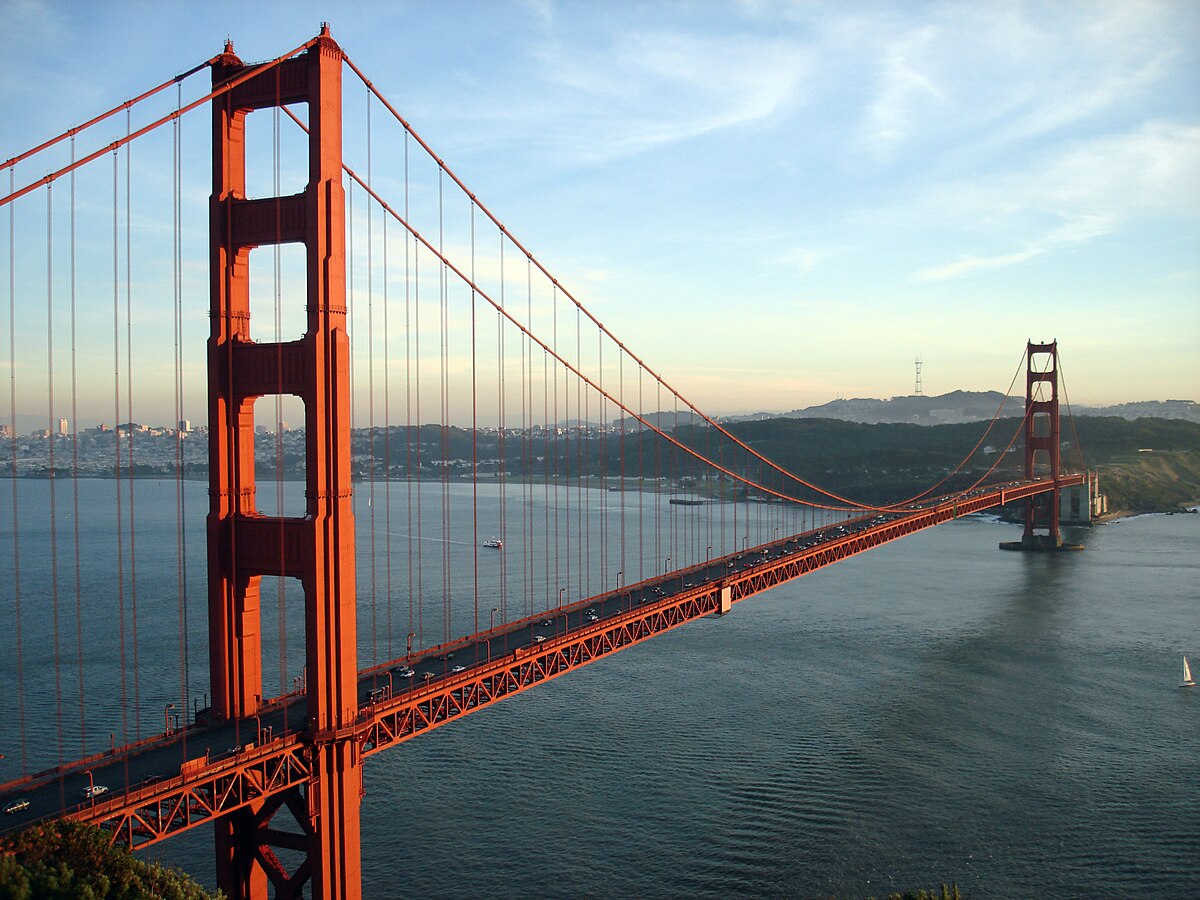The Golden Gate is the North American strait connecting San Francisco Bay to the Pacific Ocean, since 1937 it has been spanned by the Golden Gate Bridge. Technically, the ‘gate’ is defined by the headlands of the San Francisco Peninsula and the Marin Peninsula, while the ‘strait’ is the water flowing in between.
During the last Ice Age, when sea level was several hundred feet lower, the waters of the glacier-fed Sacramento River and the San Joaquin River scoured a deep channel through the bedrock on their way to the ocean. The strait is well known today for its depth and powerful tidal currents from the Pacific Ocean. Many small whirlpools and eddies can form in its waters.
Before the arrival of Europeans in the 18th century, the area around the strait and the bay was inhabited by the Ohlone to the south and Coast Miwok people to the north. Descendants of both tribes remain in the area.The Golden Gate is often shrouded in fog. During the summer, the heat in the California Central Valley causes the air there to rise. This can create strong winds which pull cool moist air in from over the ocean through the break in the hills caused by the Golden Gate, commonly causing a stream of dense fog to enter the bay. The strait was surprisingly elusive for early European explorers, presumably due to this persistent summer fog. The strait is not recorded in the voyages of Juan Rodriguez Cabrillo nor Francis Drake, both of whom may have explored the nearby coast in the 16th century in search of the fabled Northwest Passage. The strait is also unrecorded in observation by Spanish galleons returning from the Philippines that laid up in nearby Drakes Bay. These galleons rarely passed east of the Farallon Islands (27 miles west of the Golden Gate), fearing the possibility of rocks between the Islands and the mainland.
The first recorded observation of the strait occurred nearly two hundred years later than the earliest European explorations of the coast; in 1769 Sgt. José Francisco Ortega, the leader of a scouting party sent north along the peninsula of present-day San Francisco, reported that he could proceed no further because of the strait. On 5 August 1775 Juan de Ayala and the crew of his ship the San Carlos became the first Europeans known to have passed through the strait, anchoring in a cove behind Angel Island which is now named in Ayala’s honor. Until the 1840s the strait was called the “Boca del Puerto de San Francisco” (Mouth of the Port of San Francisco). On 1 July 1846, before the discovery of gold in California, the entrance acquired a new name. In his memoirs, John C. Frémont wrote, “To this Gate I gave the name of “Chrysopylae”, or “Golden Gate”; for the same reasons that the harbor of Byzantium was called Chrysoceras, or Golden Horn.”The Golden Gate Bridge is a suspension bridge spanning the Golden Gate, the opening of the San Francisco Bay onto the Pacific Ocean. As part of both US Highway 101 and California Route 1, it connects the city of San Francisco on the northern tip of the San Francisco Peninsula to Marin County.
The Golden Gate Bridge had the longest suspension bridge span in the world when it was completed in 1937 and has become an internationally recognized symbol of San Francisco and California. Since its completion, the span length has been surpassed by eight other bridges. It still has the second longest suspension bridge main span in the United States, after the Verrazano-Narrows Bridge in New York City. In 2007, it was ranked fifth on the List of America’s Favorite Architecture by the American Institute of Architects.

